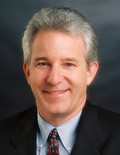Rebuilding Community Memorial -- and Five Points Too
If you’re interested in the future of Five Points and the neighborhood around Community Memorial Hospital, I’d strongly suggest you drop by CMH’s design workshop “charrette” sessions this week. There’s a public session Wednesday night at 7 p.m. and another one Friday at 5 p.m., as well as less formal talks every day at lunchtime (12:30 p.m.). All are being held in the old American Legion building (now housing Mai’s Café) at 2809 Main Street. Come in through the back door.
The reason for all the design work is that CMH has to construct a new hospital building for patients and acute care. That’s because a state law requires hospitals to retrofit some of the facilities – or build new facilities – to meet seismic standards by 2013. The design charrette is a semi-private, semi-public week-long event sponsored by CMH (not by the city) to work out some design ideas. Official application and public hearings and so forth will occur later.
I went to an initial public meeting last week and then again to the first public session Tuesday night. Both meetings have been lightly attended by the public. But the design team is kicking around some good ideas. CMH’s current idea is to build a new building to the south of the old building (behind the American Legion Hall) and use the old building for new purposes, including possibly a biotech incubator that would line up with the city’s economic development strategy.
The design team is also talking about reorienting the hospital so that the new building’s “front door” would be on Cabrillo Street behind the American Legion Hall, and create a new what is now the parking lot in between American Legion Hall and the hospital. (Some planning efforts in the past have suggested that the American Legion building, now owned by CMH, should be torn down and replaced with some kind of park.) An additional parking garage next to the park, behind Billy O’s and other businesses on the north side of Main Street, would probably also be part of the project. The effect would be to turn the park into a “square” at the “new front” of the hospital.
CMH’s design team is also working up some ideas about the general Five Points area that won’t be part of the hospital project but could be part of an eventual plan for additional development at Five Points. Among the ideas:
* Updated retail buildings along Main Street, along with angled parking.
* Possible roundabouts along Main Street at both Loma Vista and Five Points.
* Reconfiguring the streets in between Main Street and the CMH so they are better designed for both pedestrians and cars.
I was actually pretty disappointed that so few people have come out to the public portions of the charrette so far. So if you want to know more about the CMH projects or have ideas about what might happen at Five Points, go to one of the charrette sessions. I’d love to know what you think.
